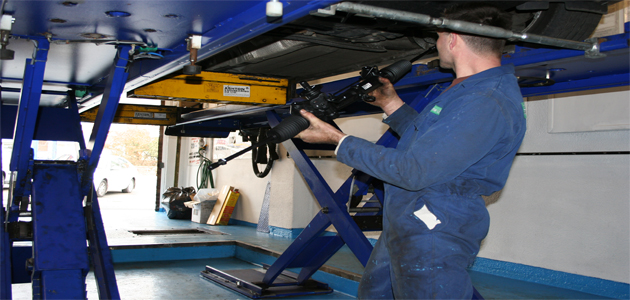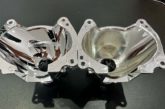
Remy Automotive has one of the largest steering rack and steering pump ranges available to the UK market. As a result they are in a unique position to give you some valuable advice on what to do before you change a leaking steering rack – a safety critical component.
Removing the old rack
Before removing the old steering rack from the vehicle, it is important to centralise the steering wheel and ensure that both wheels are in line. Once the rack has been removed a very good tip is to wind the new rack to its stop and then wind fully to the other stop – counting the rotations – and then wind back half the rotations. This will centralise the pinion.
Lay both racks next to one another and, because the steering was centralised on the vehicle before removing the OE rack, both pinion positions on both racks should be identical. This will ensure that when the replacement rack is fitted, the steering wheel will be in the central position with the minimum amount of tracking required.

A tracking tip
Remy provides small adjustable clips attached to the rubber gaiter and tie rod for use during the tracking process. It is essential that during this process these clips are undone to prevent the rubber gaiters from being twisted during tracking. This will ensure that the gaiters are not damaged/split, which can result in water debris ingress and cause premature failure. Additionally, if the rubber gaiters are twisted, it can cause a problem by restricting the movement of the rack.
Common causes of replacement
Probably the most common reason for the steering rack to be replaced is as a result of MOT failure. However, the contamination contained in the hydraulic system is often left in there when the replacement is installed. As a result, this contamination can dramatically reduce the life of the replacement rack unless it is thoroughly cleaned out.
That is why it is essential to follow the most important first step when replacing the rack or, for that matter, the pump or any other hydraulic steering component. Before unbolting anything make sure that you flush the whole system with new, clean, manufacturer-recommended fluid.
This can be done quickly and easily by disconnecting the pressure line from the rack and positioning it in a waste oil receptacle. You then fill the pump fluid reservoir to the full level with fresh fluid, start the engine and continue pouring and flushing until clean fluid exits from the pressure line.
This can save a lot of extra work later, reducing the chance of the vehicle being returned under warranty. It also improves customer satisfaction and increases the life expectancy of the replacement steering rack.
Invest in the best
Developments with electric steering are being driven by VMs as the fewer components required makes it a much cleaner and more fuel efficient system. Technicians must work with suppliers who will offer a full range and support to allow you to benefit from the current and growing demand for electric steering. You must also be prepared to invest in the diagnostic equipment to help you correctly diagnose problems to keep abreast of these technological advances.









